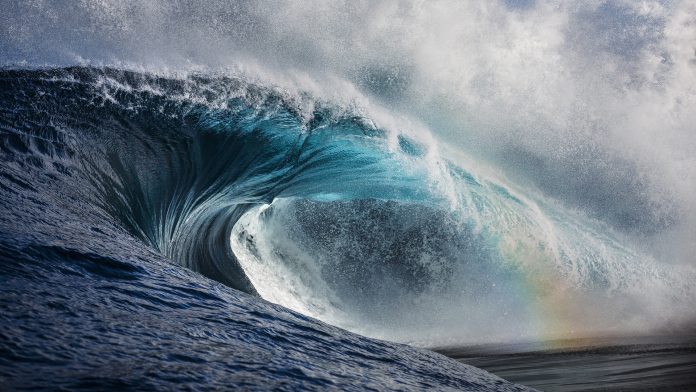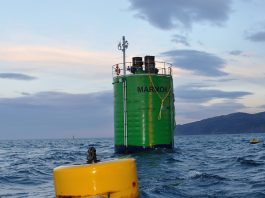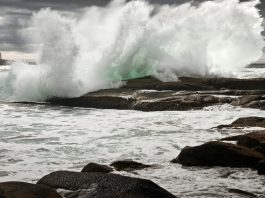Donagh Cagney, Policy Director of Ocean Energy Europe, explains why ocean energy is well-placed to be as successful as wind and solar in Europe’s renewables market.
As temperatures in Europe rise even faster than expected, the effects of climate change are getting very real. Coupled with skyrocketing energy prices that stem from an overreliance on fossil fuels, it is clearer than ever that Europe’s future depends on its transition to a 100% renewable energy system.
We need to act now to reach that goal, by developing a range of innovative renewable energy sources to complement the already well-established wind and solar sectors. One of those innovations is ocean energy – the next big thing in energy. The oceans are the world’s largest untapped source of power. Ocean energy technologies harness the power of tides and waves, as well as differences in temperature and salinity, to produce electricity.
Ocean energy is clean, renewable and has the potential to provide 10% of Europe’s current electricity needs by 2050. That is enough to power 94 million households every year. In addition, a strong ocean energy industry will yield many economic benefits for Europe, from local jobs to global export opportunities.
Writing the next chapter in a European success story
Europe has been leading the way in developing ocean energy technologies and is still the global frontrunner. For years, the European Union has been proactive in creating mechanisms that drive the development of ocean energy. This support has ensured that, today, most of the top ocean energy technologies are still designed and made in Europe.
Between 2007 and 2019, total R&D expenditure on wave and tidal energy in the EU amounted to €3.84bn, with €1.1bn coming from public funding programmes. On average, during the same period, every €1 of public funding (EU and national) has leveraged €2.9 of private investment. This commitment to funding ocean energy R&D has undoubtedly played an instrumental role in bringing these technologies to the brink of industrialisation and stimulating new economic activity.
Despite the huge progress made to date, technology developers are hitting a wall when it comes to scaling up. This ‘Valley of Death’ has been created by an absence of market visibility in EU Member States. The 27 National Energy & Climate Plans (NECPs) are completely focused on meeting 2030 targets – thus neglecting the technologies that are needed post-2030.
It is clear that R&D investment in second-generation renewables cannot stand alone – it must be coupled with market deployment in order to scale up the ocean energy industry.
Recasting the Renewable Energy Directive
One of the key European policy tools to address this shortcoming is the latest revision of the Renewable Energy Directive (RED III). The European Parliament’s ITRE committee is demanding that the Directive should increase the EU’s overall renewable energy target to 45% by 2030 and set out a new indicative target for innovative renewables at 5% of all new renewable energy capacity installed. This target for innovative renewables is key to allow ocean energy technologies to scale up and would ensure that Europe remains at the frontier of renewable energy innovation. EU national governments should embrace this opportunity and translate the Parliament’s idea into concrete law.
Fast-tracking renewables via REPowerEU
Another important policy initiative is the REPowerEU plan, which the European Commission launched in response to Russia’s invasion of Ukraine. REPowerEU’s goal is to reduce Europe’s dependence on Russian fossil fuel by accelerating the rollout of renewables. Most of the plan focuses on speeding up permitting processes, with a new law recognising renewable energy as ‘an overriding public interest’ and ‘go-to’ areas to fast-track renewable projects.
The text also confirms that the next call of the Innovation Fund will have a budget of €3bn to finance large-scale renewable energy projects. It will also include a new call for mid-sized pilot projects for validating, testing, and optimising highly innovative solutions, which is very well suited to the current needs of the ocean energy industry.
REPowerEU is a positive step towards an independent, stable, and renewable energy market in Europe. However, bolder actions can be taken, such as the European Parliament’s proposed clear and binding targets for innovative renewables.
Delivering on the dedicated strategy for offshore RES
The final piece of the European policy puzzle is the EU strategy on offshore renewable energy. This strategy was launched by the European Commission at the end of 2020, with the goal of boosting uptake of offshore renewables, and creating sustainable and inclusive growth in the EU. It sets clear targets of 100 MW of installed ocean energy capacity by 2025 and 40 GW by 2050.
This is a major step forward for the ocean energy industry. Unfortunately, despite a very strong pipeline of ocean energy projects, the implementation of this strategy has been slow and time is running out. Our latest report proposes a step-by-step action plan for the EU and Member States to move up a gear and reach that 100 MW target by 2025.
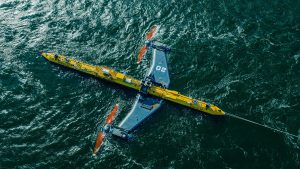
The technologies are here, they have been tested in real sea conditions and have demonstrated their potential for years. It is now up to policymakers to create the right conditions for the industry to scale up – the same opportunities that wind and solar received as they emerged.
Recent highlights in ocean energy technology development
30.2 MW of tidal stream technology and 12.7 MW of wave energy has been deployed in Europe since 2010.1 Of this, 11.5 MW of tidal and 1.4 MW of wave are currently operating, while the remaining devices have been decommissioned as projects successfully complete their testing programmes.
Turning the tide of energy generation
On the tidal stream side, one of the most innovative projects currently in the water is Orbital Marine Power’s O2. The O2 is a 2 MW floating tidal platform equipped with two turbines. It is connected to the grid at the European Marine Energy Centre (EMEC) in Orkney and started generating power earlier this year. It is expected to operate in Orkney’s fast-flowing waters for the next 15 years, producing enough clean, predictable power to meet the annual electricity demand of around 2,000 UK homes. Orbital also recently launched the Horizon 2020 FORWARD 2030, which will allow them to build and deploy the next iteration of their device.
Even further North, Swedish company Minesto recently installed a new-generation Dragon 4 tidal ‘kite’ at their Vestmannasund site in the Faroe Islands. The 100 kW device is grid-connected and started generating power out of the box. The results from this deployment have informed the design of their upcoming 1.2 MW Dragon 12 tidal kite. Ultimately, Minesto’s projects in the Faroe Islands could generate an estimated 350 GWh per year, which represents 40% of the islands’ growing electricity consumption.
Tidal turbines can be fixed to the seabed, or float near the surface, with moorings attached to the seafloor. The most common type of tidal stream technology is the horizontal axis turbine. The rotors are turned by the tidal stream, much like a wind turbine’s blades. Other designs include the vertical axis turbine and the tidal kite. Vertical axis turbines work like horizontal axis turbines, except the blades turn around a vertical rotor. Tidal kites are tethered to the seabed and ‘fly’ under water with a turbine attached under the ‘wing’.
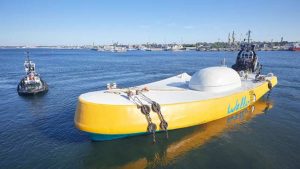
A new wave of renewable technologies
European wave energy developers have also been busy. Last year, Scottish company Mocean Energy deployed its 1:10 scale Blue X prototype at EMEC. The device completed 154 days at sea, delivering steady outputs of up to 5 kW and peaks of 30 kW, operating in sea states of up to 2.3m maximum wave height. Based on this successful testing period, Mocean Energy is now working on two commercial devices: the 20 kW Blue Star, which will provide renewable power for a range of subsea applications, and the 250 kW utility-scale Blue Horizon.
On the other side of Europe, in the Spanish Basque Country, Finnish company Wello deployed its second-generation full-scale wave energy converter (WEC) at the Biscay Marine Energy Platform (BiMEP). The 600 kW device should undergo more tests and trials in real-world ocean conditions in the next couple of years, during which time Wello is aiming to achieve full validation of its wave energy conversion technology.
Several different wave energy technologies currently exist. Some of the more common designs today are the point absorber, the oscillating wave surge converter, the oscillating water column, the attenuator or the rotating mass. As wave energy scales up, the industry will converge on a much smaller number of designs. But there will still be some design variety, to serve different wave environments.
From strength to strength: Scaling up ocean energy
The first large-scale ocean energy farms (or multi-device ‘arrays’) are currently being developed across Europe. This is the next step in ocean energy’s industrial development, with larger projects being built around Europe and becoming an integral part of our energy system. In the coming years, we expect that installed capacity will ramp up quickly, while prices will fall as devices and parts become mass produced.
Two of the most exciting European array projects to date are the HiWave-5 and the FloWatt projects.
HiWave-5 is CorPower Ocean’s flagship demonstration project. The Swedish company designed and built the C4, their first commercial-scale wave energy converter (WEC). Extensive dry-testing was performed in Stockholm and the device will be deployed in Northern Portugal later this year. Three additional machines will be added during the next stage of the programme, forming one of the first wave farms generating energy to the grid. CorPower’s goal is to bring certified and warranted WECs to the market by 2024, and introduce wave energy into the mainstream energy system.
FloWatt is a project led by French tidal energy developer HydroQuest. It is the first tidal array project in France and has the potential to become the largest such project worldwide. Seven of HydroQuest’s new 2.5 MW tidal turbines will be built in Cherbourg and deployed at the Raz Blanchard – one of the most resource-rich sites on the planet for tidal energy generation. The complete 17.5 MW array is scheduled to be operational by 2025, and will be an example of what the tidal energy industry can achieve in terms of power generation, job creation, and competitiveness.
Calling EU Member States: Now is the time to act
Projects like these are very encouraging for the future of the industry, but the support and commitment of EU Member States will be crucial for the development of other large-scale projects.
Later this year, the European Parliament and national governments will negotiate on the new EU Renewable Energy Directive targets. If agreed, those targets would put Europe on a path towards a more sustainable future, while drastically reducing our dependence on imported fossil fuels.
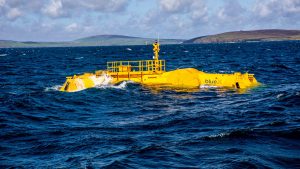
© Colin Keldie
Member States will also publish their revised NECPs in 2023. At a time when the harsh impacts of climate change are being felt in Europe and worldwide, we need national governments to take bold actions to transition quickly to a 100% renewable energy system.
This will only happen by setting clear targets for innovative renewable technologies, including ocean energy, and by providing revenue support to this nascent industry. As well as strong research funding in the US and China, we have seen the overwhelmingly positive impact of feed-in-tariffs on the ocean energy sector in Canada, the UK, and most recently France. Creating similar policies across Member States will ensure that the EU retains its technological leadership and its homegrown technology developers.
We are at a point today where there is no time for excuses anymore. Renewable energy is cheaper, safer and cleaner than the alternatives. Wind and solar are already the cheapest forms of energy generation in Europe today, but we need other renewables to kick in when the wind isn’t blowing, and the sun isn’t shining. A broad range of renewable energy sources will ensure our energy security and combat climate change.
Ocean energy technologies are now ripe for the picking – it is no longer a matter of if ocean energy will happen, but rather when it will happen.

References
1: Ocean energy key trends and statistics 2021
Donagh Cagney
Policy Director
Ocean Energy Europe
www.oceanenergy-europe.eu
https://www.linkedin.com/company/european-ocean-energy-association/
https://www.facebook.com/EuropeanOceanEnergyAssociation
https://twitter.com/OceanEnergyEU
Please note, this article will also appear in the eleventh edition of our quarterly publication.

